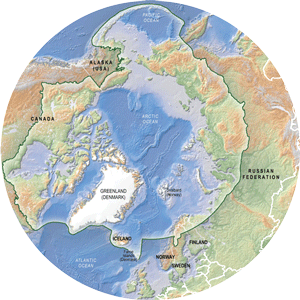Decide where to Monitor?
Monitoring in the Arctic is challenging and restricted by ability to access remote locations and the costs entailed. The CBMP utilizes existing monitoring capacity in the Arctic through enhanced coordination and integration of already established monitoring resources. Through the enhanced coordination of existing monitoring resources, there is an improved ability to identify priority gaps in current capacity, and improves, comprehensive and cost-effective monitoring. To this end co-locating of monitoring measurements of FECs at integrated, long-term monitoring sites is highly desirable. To facilitate this approach the CBMP Freshwater and Terrestrial monitoring plans provide sampling designs for biological components and identify critical abiotic parameters which affect and drive biological change that should be monitored as part of an integrated ecosystem approach.
Implementing CBMP site based monitoring design is guided by the following questions which would be answered at a site scale:
- What are the status and trends in abundance, distributions and diversity of focal ecosystem components?
- Are distributions of species changing or are species assemblages changing?
- Are ecosystem boundaries in the Arctic and Sub-Arctic shifting?
- Are these ecosystems functions changing?
- How are drivers causing changes in priority Focal Ecosystem Component attributes at a site scale?
The Freshwater plan building upon this approach also identifies a set of criteria for the selection of preferable monitoring sites, namely
- Sites with high-quality and long-term data sets
- biodiversity hotspots, i.e., areas with high species richness or unique species composition (e.g., rare species) and high conservation value
- medium to small river catchments and lakes to ensure effective sampling effort and representative species collection; and
- sites of high significance to local communities. Additional variables for consideration during the selection of sites may include water source (e.g., glacial vs. non-glacial water bodies), presence or absence of fish, and geomorphic characteristics (e.g., mean stream width, mean lake depth).
Opportunities to integrate CBMP site design with Traditional Knowledge, community-based programs and citizen science initiatives are highlighted in the monitoring plans. These monitoring efforts have the potential to greatly contribute to the integrated approach. We encourage researchers to engage communities in monitoring where possible.









